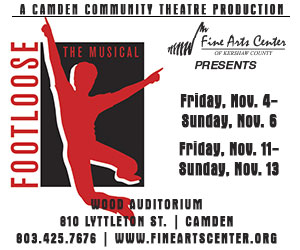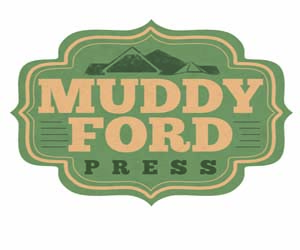The Domino that Refused to Fall
By Ken May
During recent months, the South Carolina Arts Commission has received national media attention. Of course, our state is no stranger to the national spotlight, but the light is usually shining on someone doing something wrong or embarrassing and attracting the attention of late-night TV comedians. This time, however, South Carolina and our state arts agency were in the spotlight because of something good and rather unexpected, and the coverage appeared in reputable national publications such as the New York Times and the Los Angeles Times. The root of all this attention was something negative – something potentially very damaging for our state’s students, communities and reputation.
In January 2011, in her inaugural address, Gov. Nikki Haley proposed cutting all state funding for the S.C. Arts Commission and “privatizing” the agency. This proposal was one of several such plans offered by governors around the country, and so South Carolina was pulled into the national debate about whether government should invest in the arts.
The Kansas Arts Commission did not survive the battle. In numerous national articles, Kansas was cited as the “first” state to close its state arts agency, implying that a second and third state might soon follow in a domino effect. South Carolina was mentioned as potentially the next state arts agency on the chopping block and was widely considered the most vulnerable state after Kansas.
So, why did the Arts Commission survive, when many regional and national observers thought all was lost?
The Arts Commission was saved by strong, coordinated advocacy for the arts and legislators who listened to their constituents. Arts supporters, teachers, artists, parents, community leaders, business executives – a myriad of folks around the state — spoke up loudly and often in favor of public funding for an agency mandated to serve all of South Carolina. Throughout the legislative budget process, both the S.C. House of Representatives and Senate showed strong, bi-partisan support for the arts and, when the Governor vetoed the entire Arts Commission budget, they overwhelmingly overrode that veto.
Those watching the debate outside our state did not know what we knew – that 92 percent of South Carolinians support state government funding for the arts (fall 2009 statewide poll by the USC Institute for Public Service and Policy Research). Our citizens understand that, for a tiny per-capita investment of their state tax dollars (42 cents per person for the current fiscal year), the state is able to secure federal and local matching funds for the arts, which, combined with state funds, support access to the arts for all citizens statewide. This is a good deal for our state and also the right thing to do in a democratic society—to ensure that all citizens and all communities have the opportunity to benefit from the arts.
The alternative to public arts investment at the state level – so called “privatization” – simply will not work. Yes, private, philanthropic investment is very important to the arts, but that investment is almost exclusively, and appropriately, local. Not only would a privatized state arts agency lose federal funds that require a state match, it would also be forced to compete with its own constituents for private funds – the same funds that our grants now help to leverage. Even if such an effort were successful (and that is doubtful), why should we pay the transaction costs to take money out of the local pool in order to turn around and put it right back in? It makes no sense.
But, really, how much does this matter? Are the arts really that important to our state?
According to a recent study by researchers at the Moore School of Business at USC, creative industries in South Carolina contribute more than $9.2 billion to the state’s economy annually, support more than 78,000 jobs, and return more than $570 million in tax revenues to the state each year. That’s approximately 3 percent of the total state economy. An industry of this magnitude is worthy of consistent, focused attention and investment at the state level.
The arts help attract other high-value industries by offering the vibrant cultural life sought by the well-educated, creative workers employed by these industries. These workers, along with our citizens and visitors, want to enjoy the quality of life available in cities and towns with lively and culturally rich urban centers. The arts frequently are catalysts for neighborhood and downtown revival, and there are many good examples in our state: the Congaree Vista and Main Street in Columbia; downtown Charleston, downtown Newberry, Main Street and the West End in Greenville, and many others. In addition, quality arts education – the goal of our state’s nationally recognized Arts in Basic Curriculum initiative (supported by Arts Commission funding) – helps students develop the creativity, problem-solving, self-discipline, and collaborative skills that they will need to succeed in the 21st-century economy.
The quality, diversity, and sophistication of the arts in our state have the potential to present a very positive image to the nation and the world. In the last several months, South Carolinians have made it clear that the image they want to see projected is that of a state that understands the value of the arts for everyone.
Ken May is the executive director of the South Carolina Arts Commission.






.jpg)
